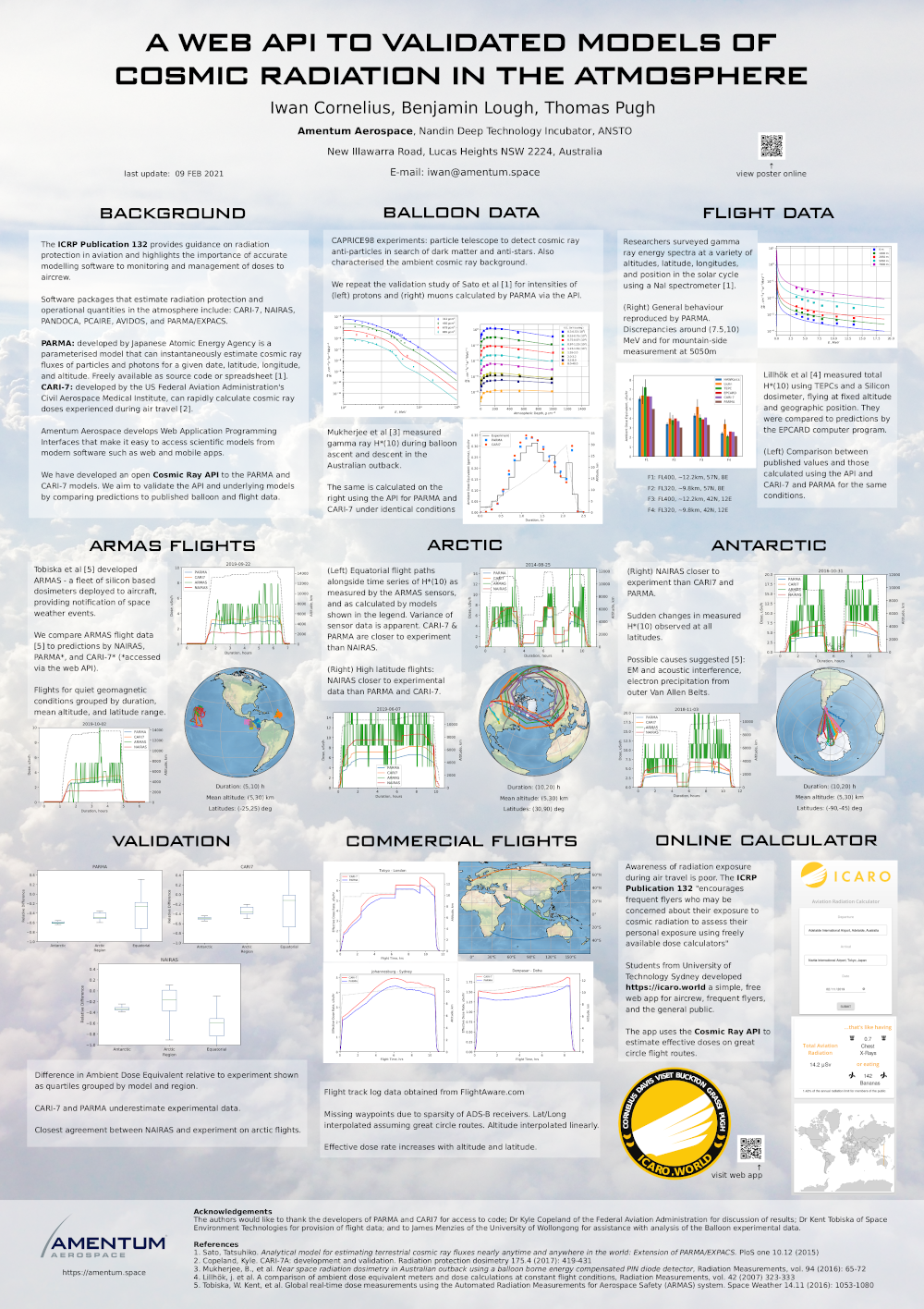solar modulation
how data from antarctica improves accuracy
The interplanetary magnetic field is a result of the solar wind produced by our Sun. The Heliocentric Potential (HP) describes the level of shielding that the interplanetary magnetic field provides us from galactic cosmic rays. The greater the HP value, the lower the radiation dose at the same altitude. The HP value is modulated by the solar cycle.
Neutron monitoring stations tell us how much residual cosmic radiation there is at ground level. High latitude stations (e.g. Antarctica) provide the clearest picture due to the minimal geomagnetic shielding.
Our Aviation Radiation API uses official HP values from the US FAA. We predict our own values to ensure dose calculations can be made for today's date (in case of delayed release of official values). Our automated data management system fetches real-time neutron monitor data from the Australian Antarctic Division and feeds that into a machine-learning pipeline that predicts current HP values.
The figure to the right shows the official and predicted HP values that we use in our radiation calculations.

